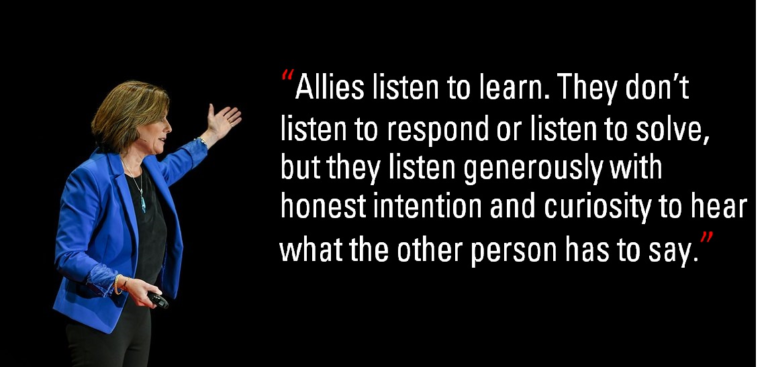Last week I shared the post on the actions ALLIES take. While I’ve talked about the growing need to build more allies in our industry, many do already exist – and their behaviors are something we can all learn from. For instance, 15 years ago when I made the bold move at Microsoft to move out of licensing sales leadership and into product management, there were many people who told me flat out that I would fail. This advice did not inspire confidence but it did inspire me to prove them wrong so I took the decision to make the move anyways. Knowing that this would be a tough road, I asked a leader in the engineering team, Brad Anderson (now President of Products and Services at Qualtrics), to help me learn how to speak to engineers and provide value back into his organization. Though I did not know it at the time, I was building an ally.
Brad subsequently advocated on my behalf in many ways, most notably by introducing me to his team members, sharing my objectives and as a result, providing a level of credibility to me that enabled me to lead some extraordinary efforts with his team and at Microsoft. At the time, I don’t know that Brad even understood the impact of his allyship and the actions that he took but he has learned from his experiences with me and other individuals that he has chosen to support how to work with even more intentionality to be an ally. You can hear the full story here ALLIES – Gavriella Schuster #beCOME an Ally Power Panel with Gavriella Schuster – YouTube.

Having the support of ALLIES does not guarantee that your own career trajectory will accelerate at the same pace as these women, but it will empower you to find the courage and confidence within yourself to unlock your full potential. You may be surprised at how far you will go when you believe in yourself and give yourself permission to go bigger and lead.


















